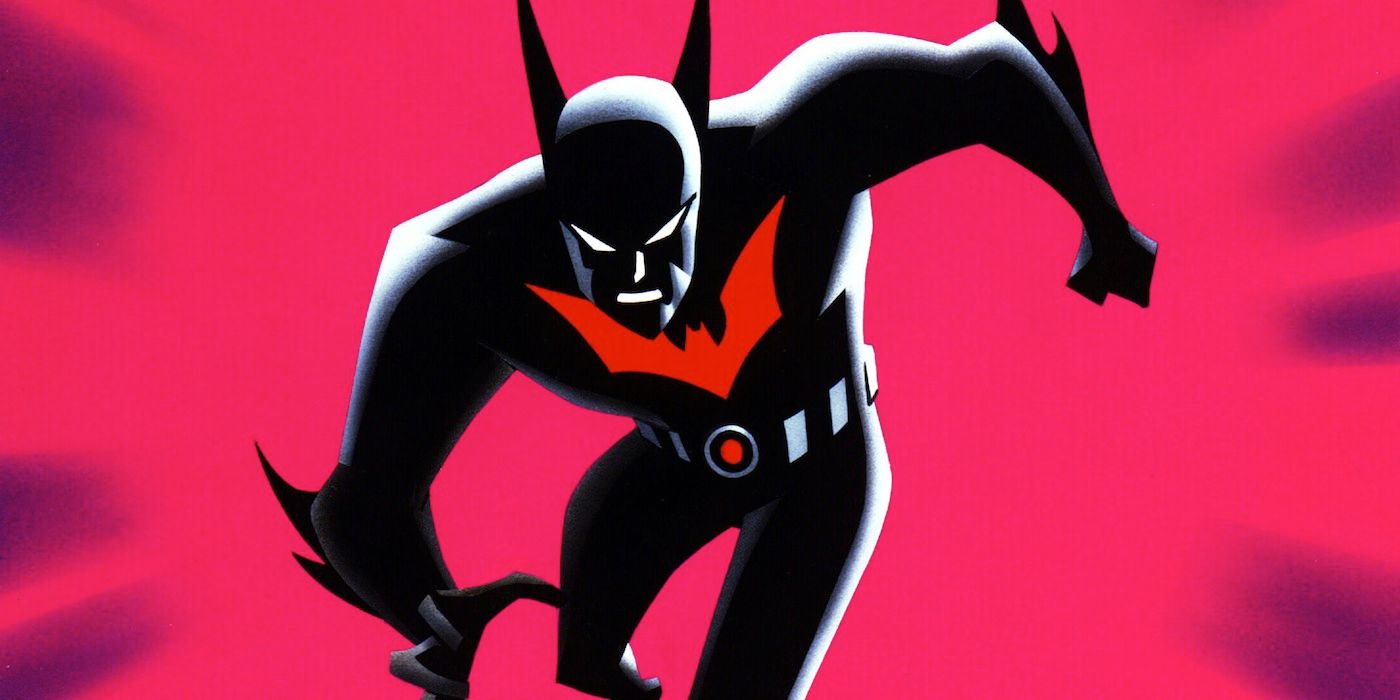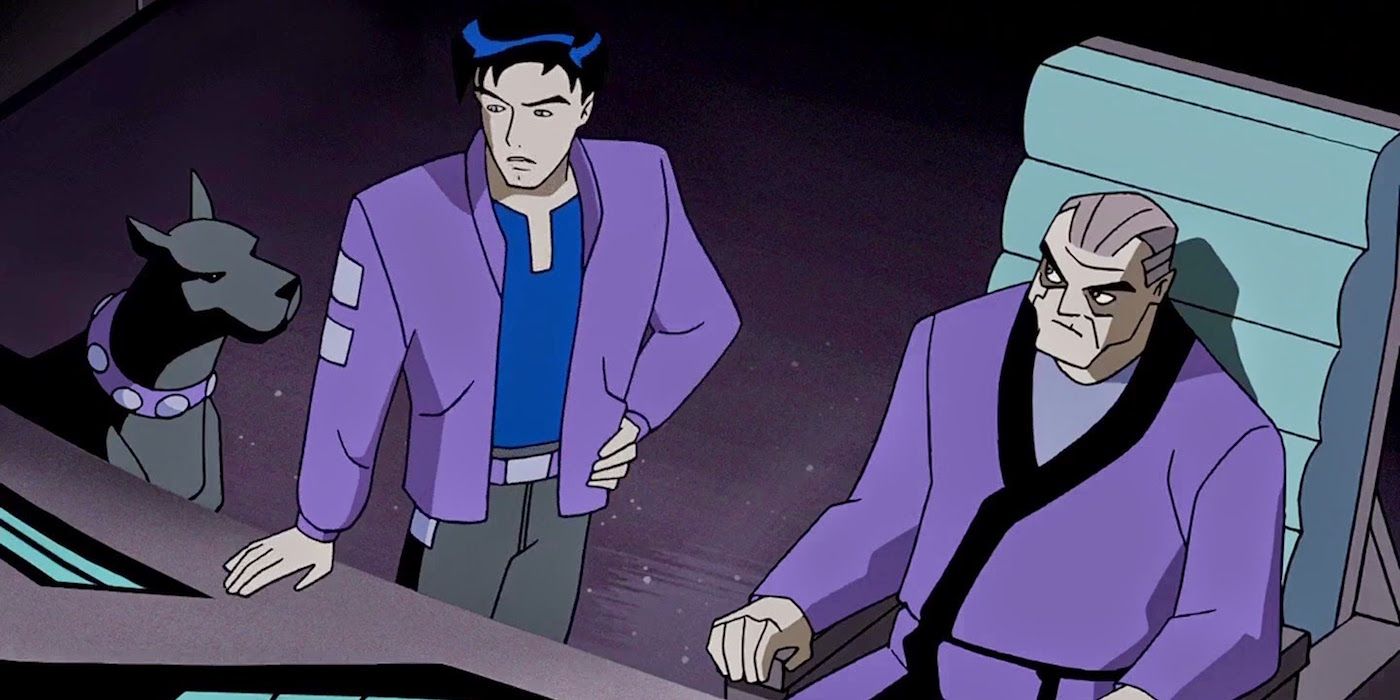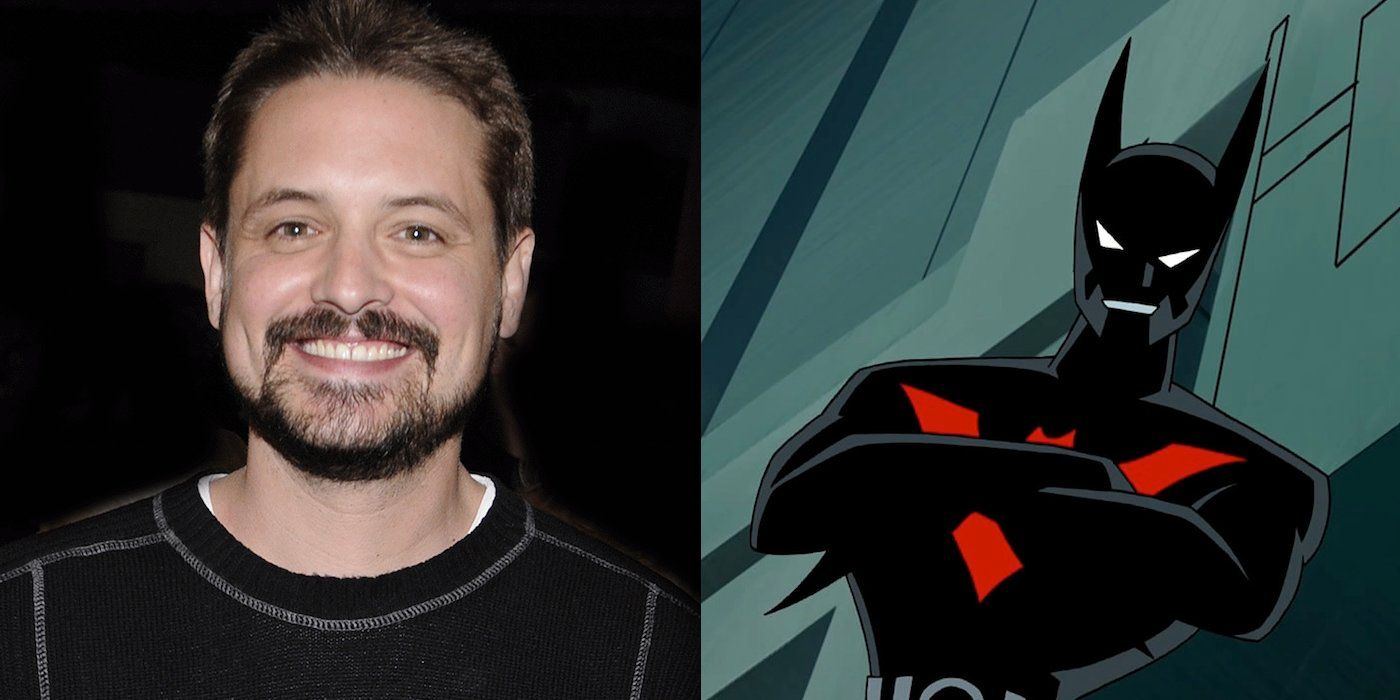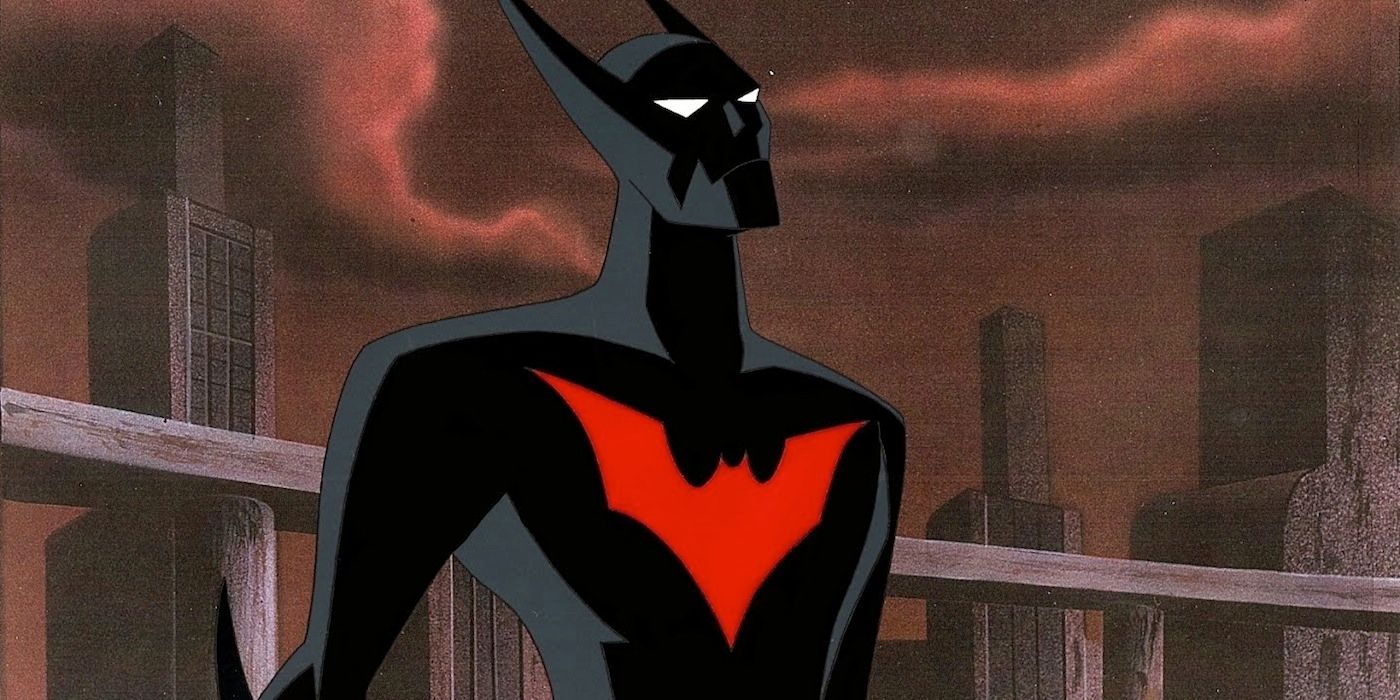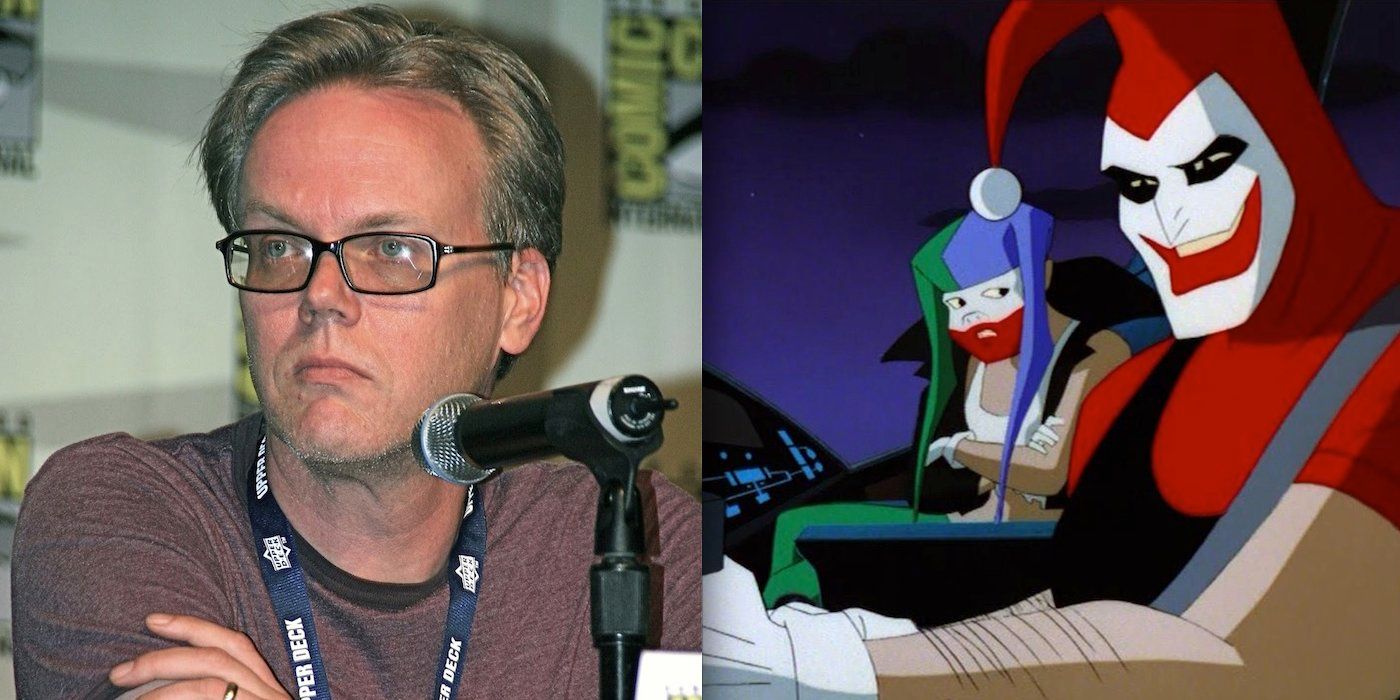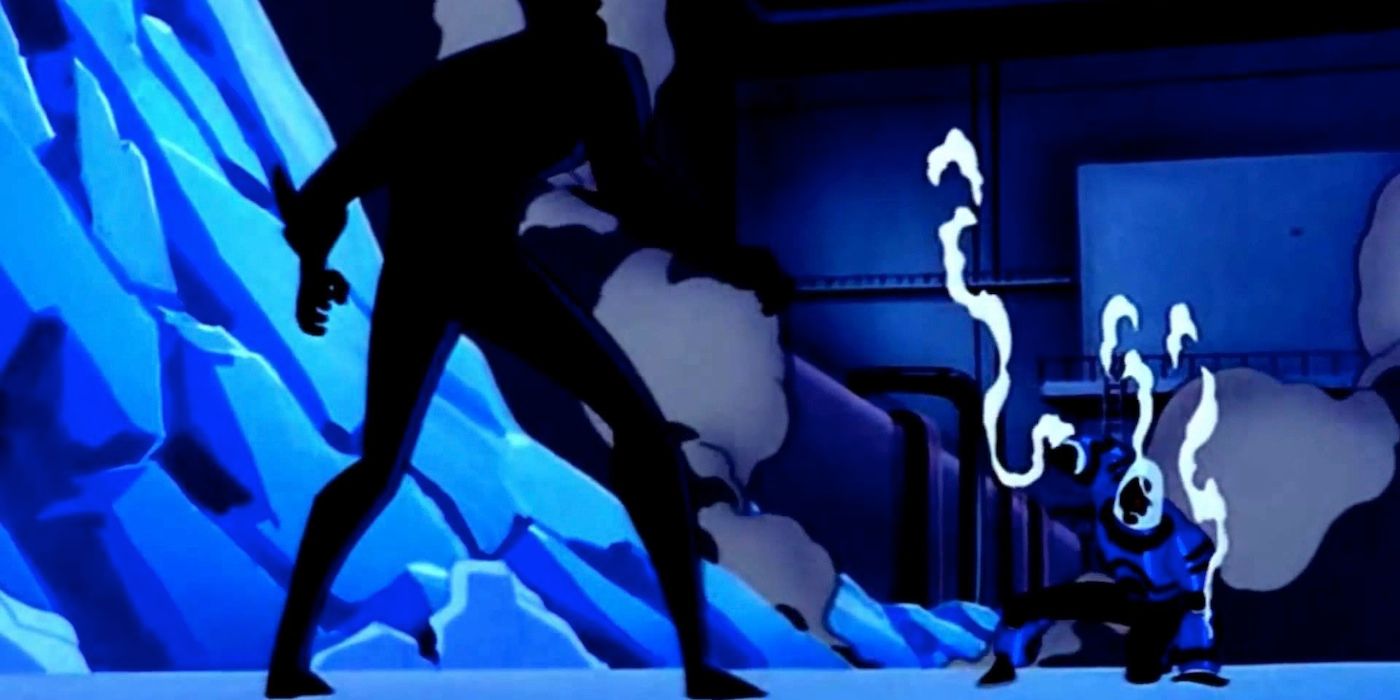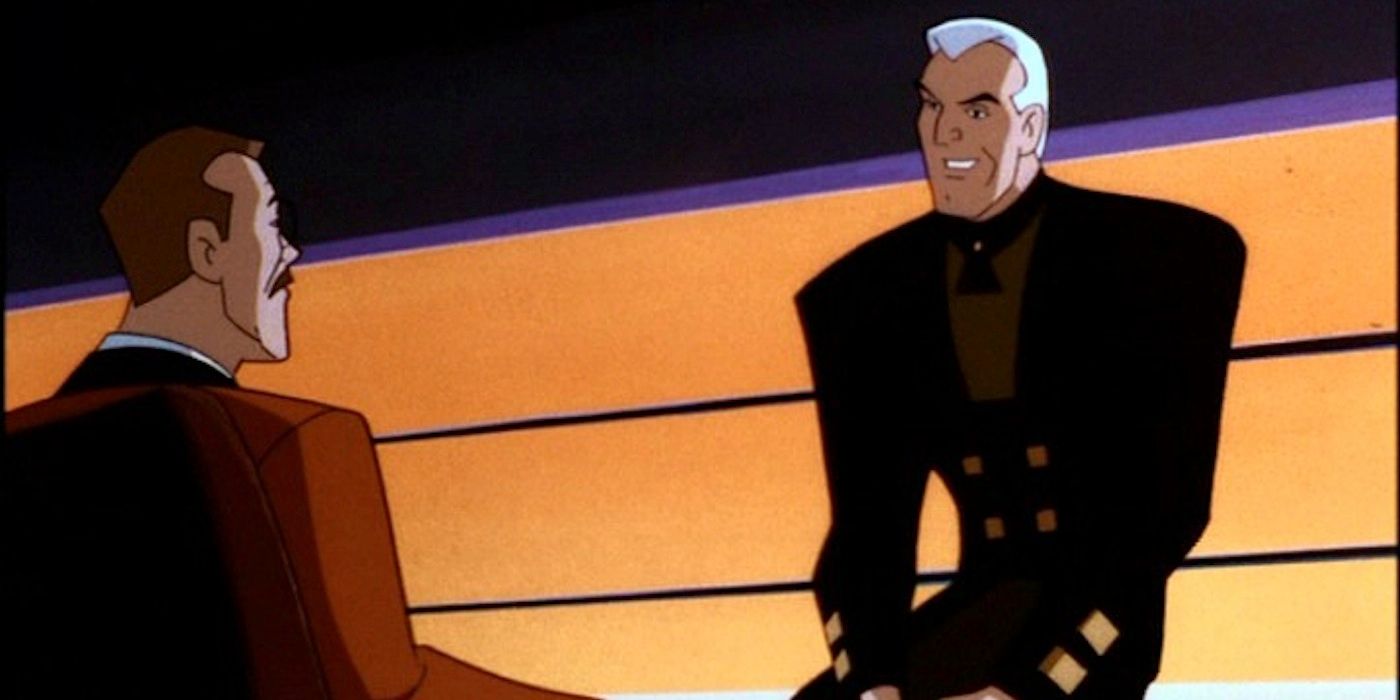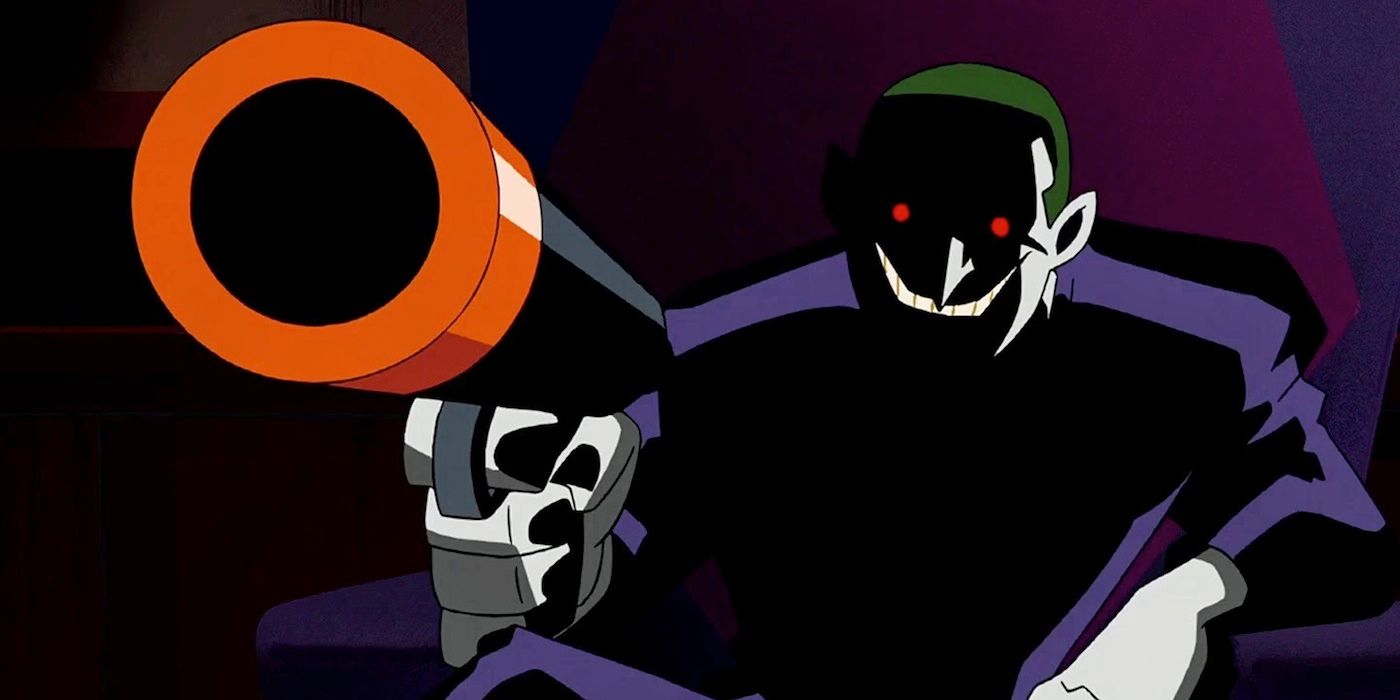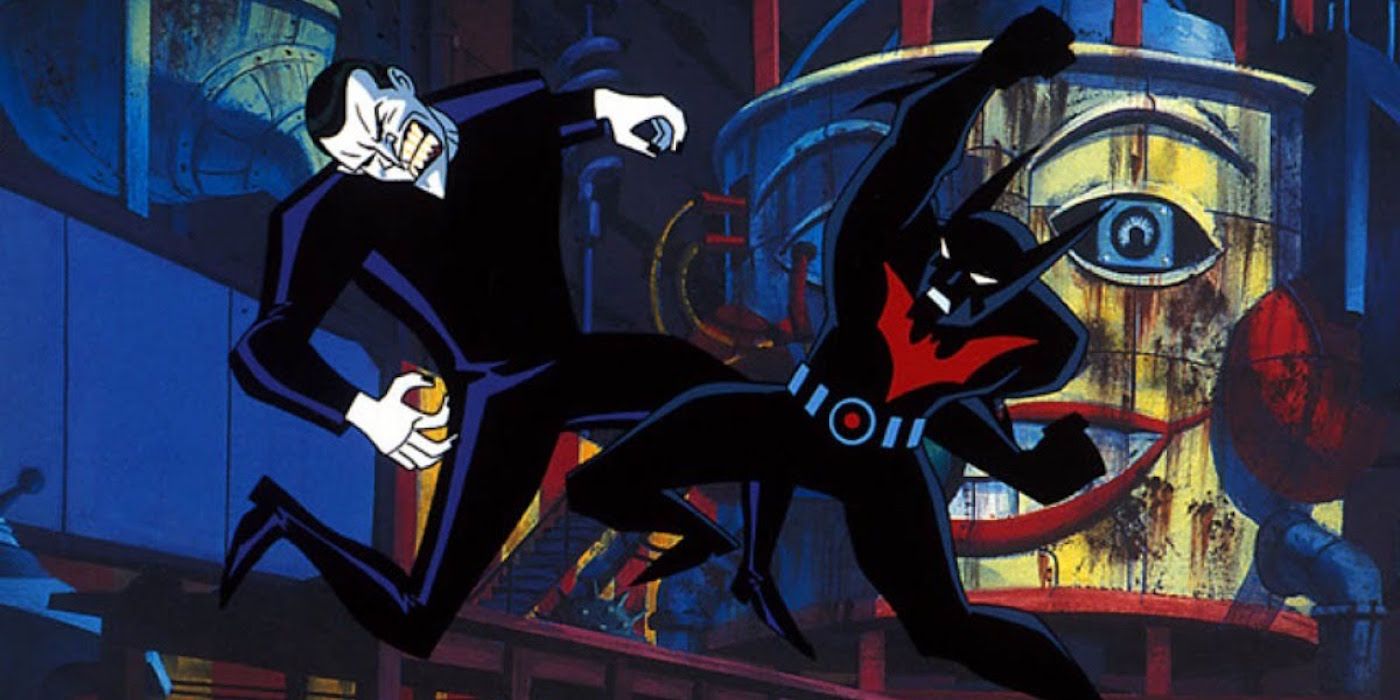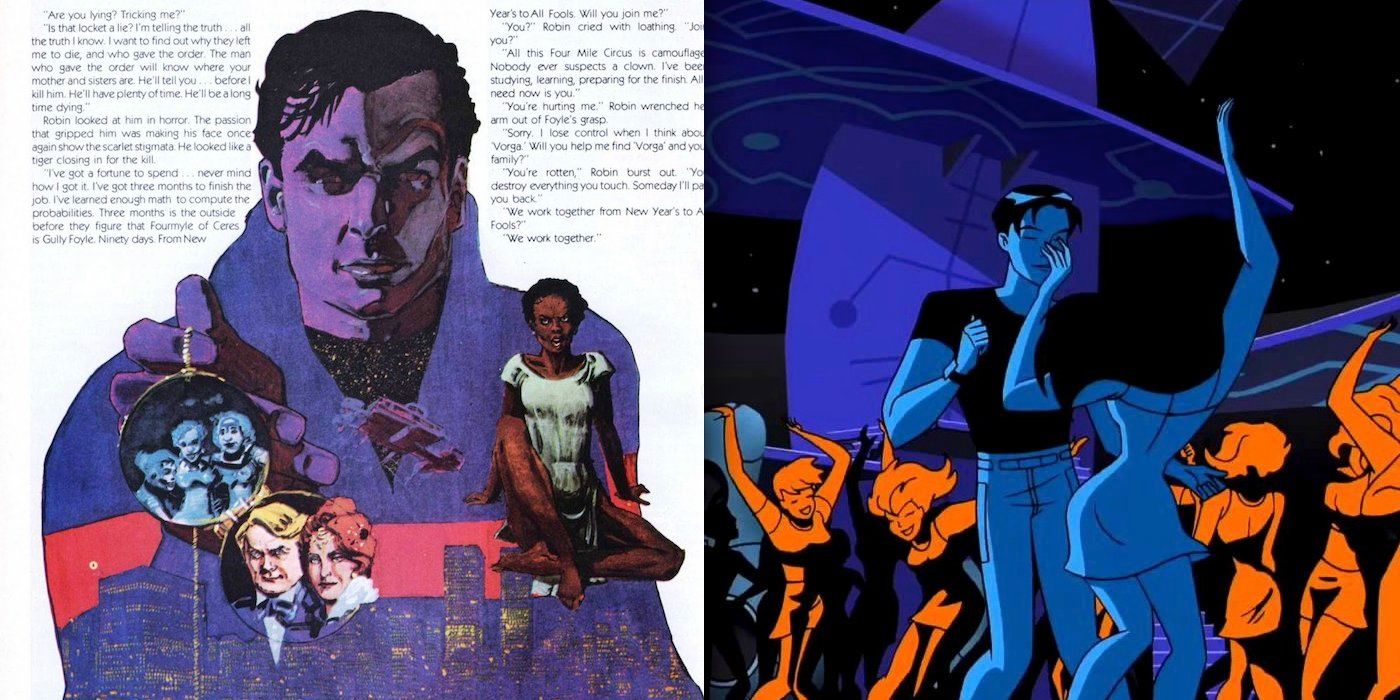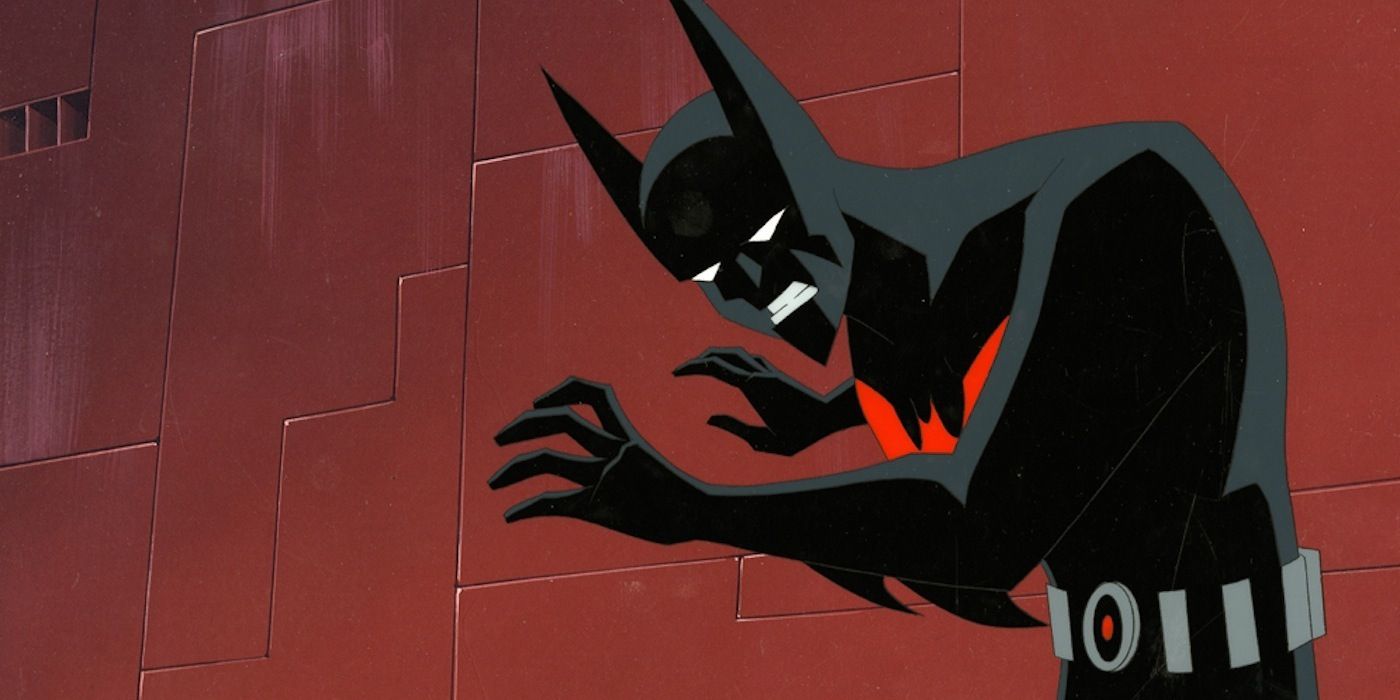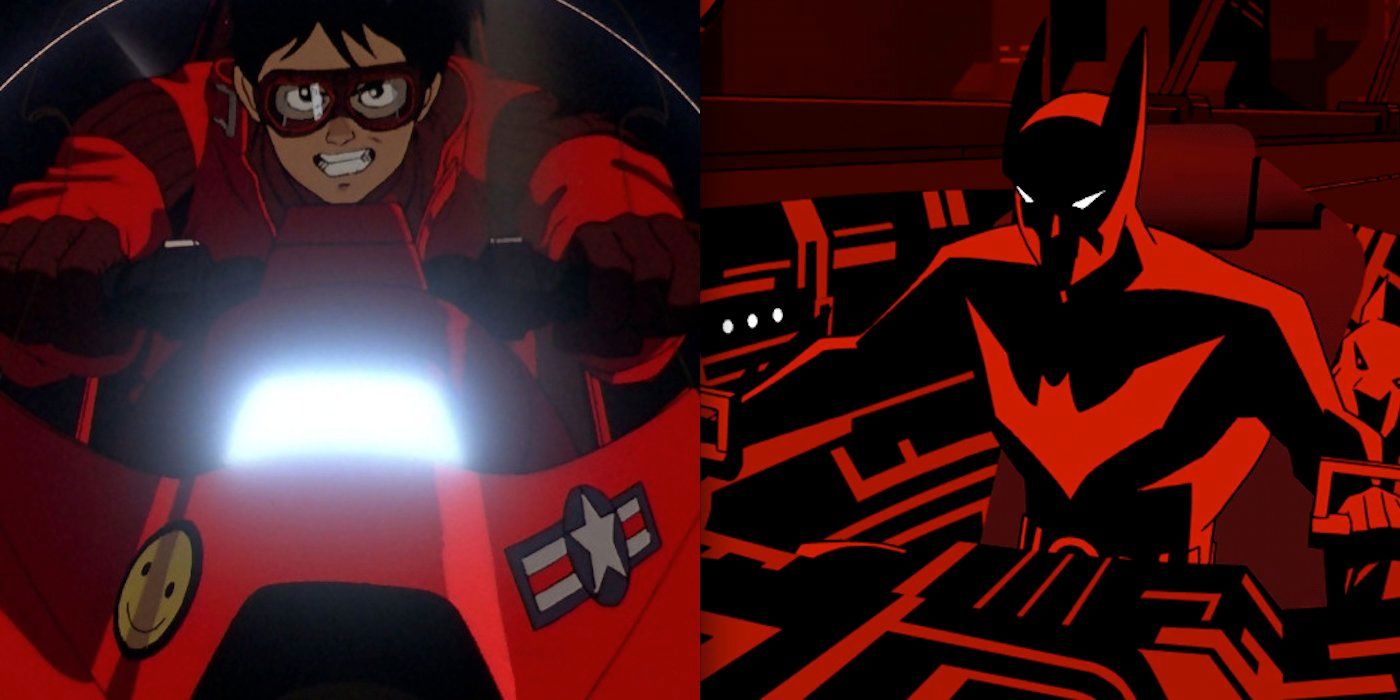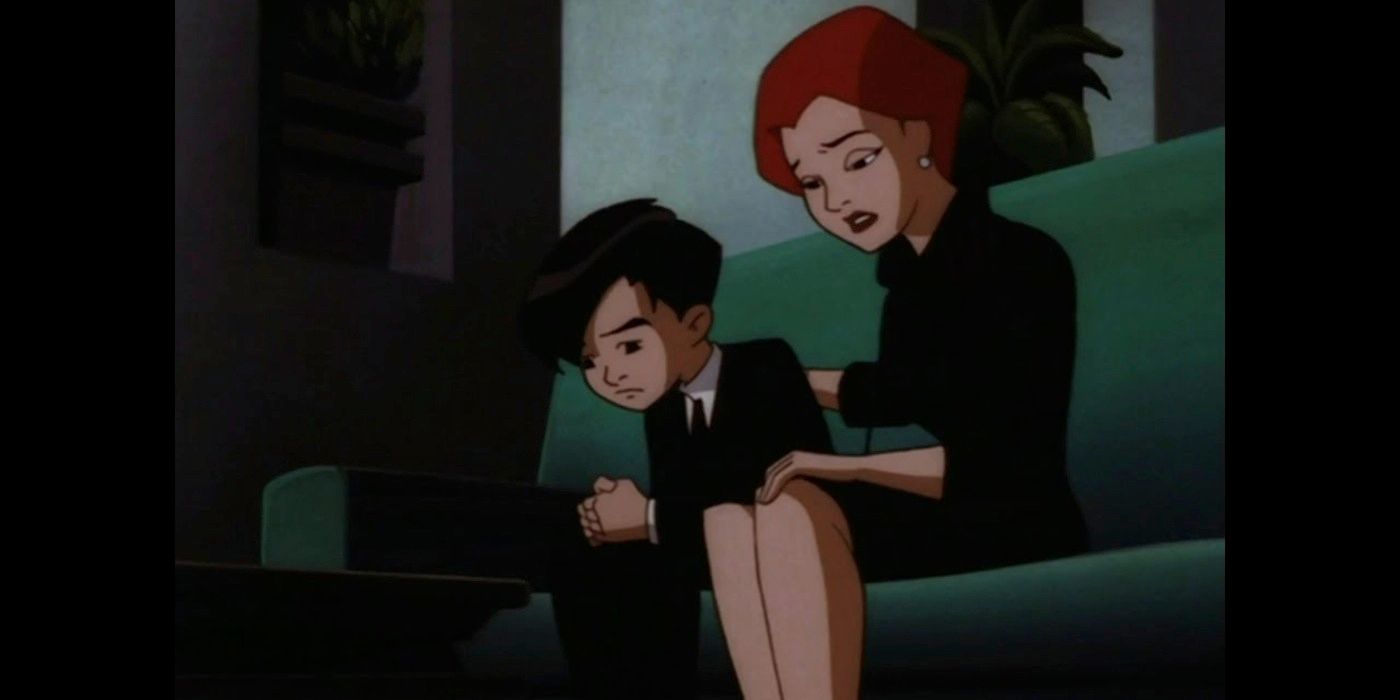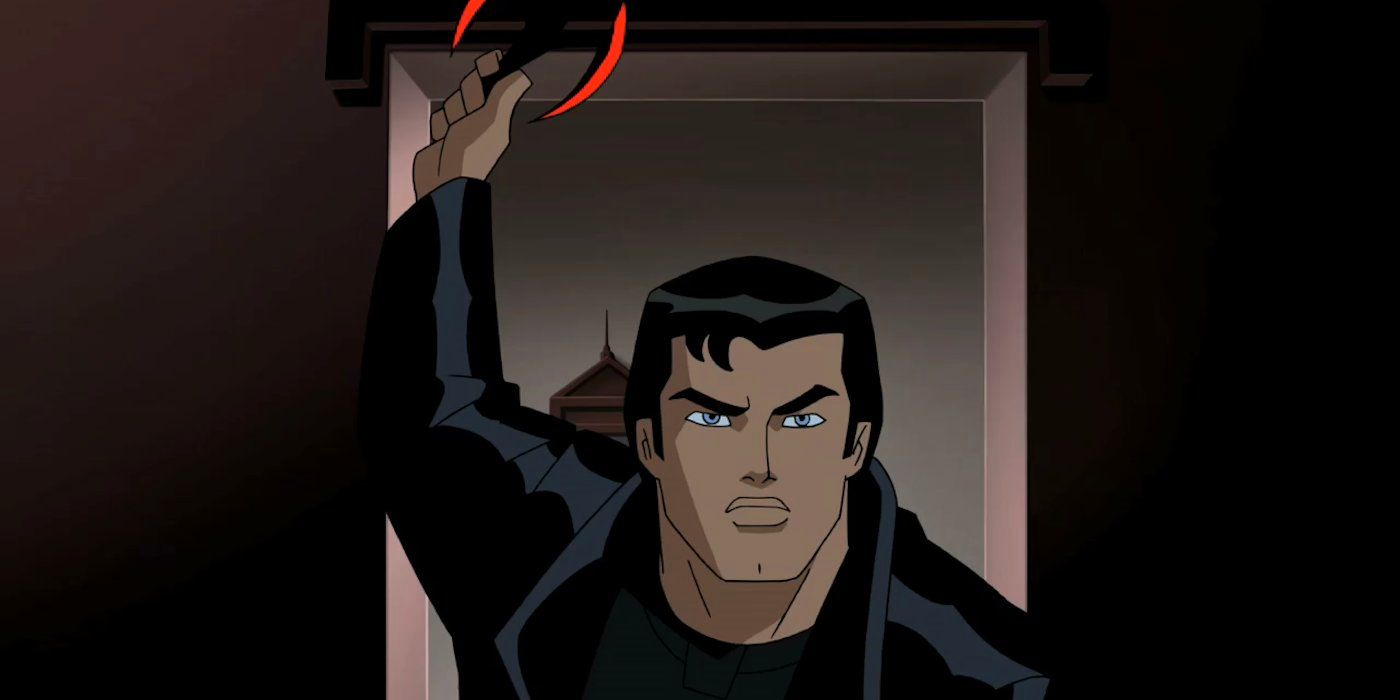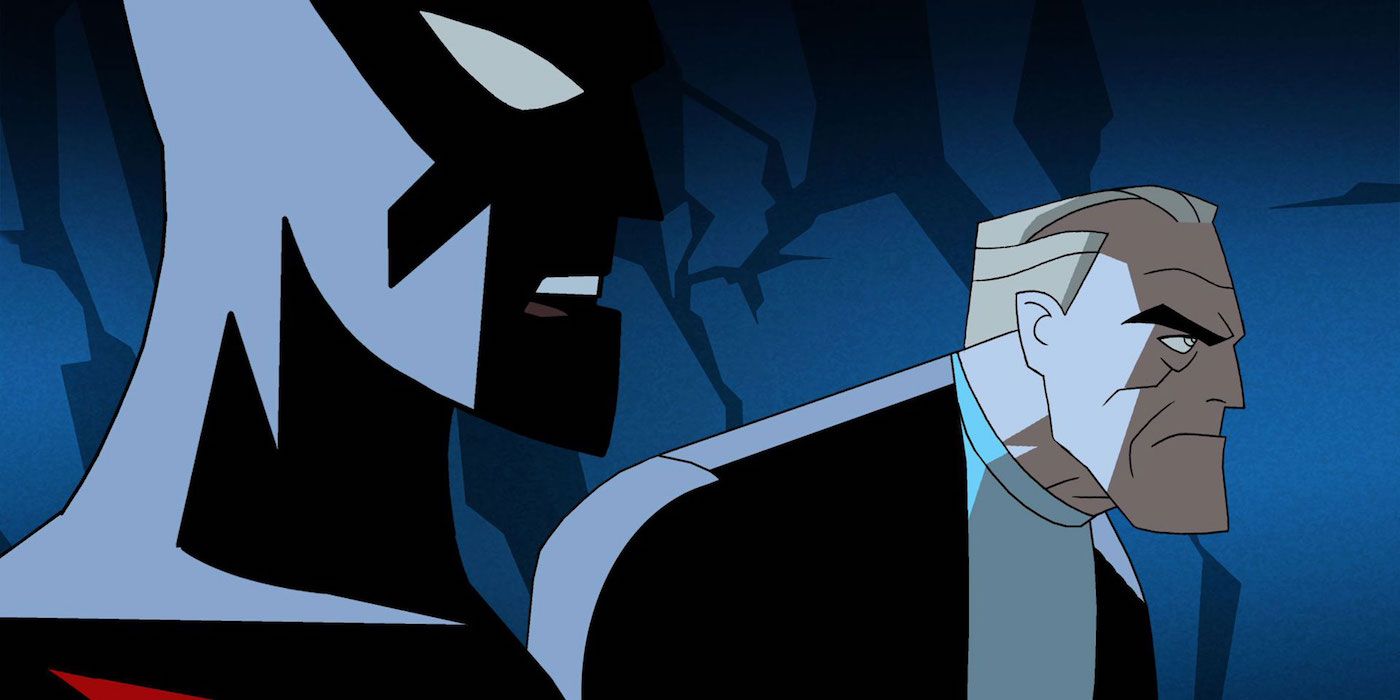On paper, Batman Beyond was a big gamble. The show recast Batman as a punk teenager, reimagined Gotham as a techno dystopia, and relegated Bruce Wayne to being an ageing mentor. All the classic Batman villains were gone, and so was the original Batsuit. There was nothing subtle about this Dark Knight continuation-- it was going to be a total rehaul, for better or for worse. Thankfully, it was for the better.
Batman Beyond is a triumph. As both a worthy successor to Batman: The Animated Series and a standalone in the DC Animated Universe (DCAU), the series made a futuristic leap without losing a step of creativity. It does everything a great spin-off should do: integrate the past, enrich the overall universe, and take storytelling risks. The odd pairing of Bruce with knucklehead newcomer Terry Mcginnis gave fans a relationship they had never seen before, and it’s a big reason why the show is so fondly remembered today. That and the fact that Return of the Joker (2000) is one one of the best Batman stories ever told.
To commemorate the show’s 18th anniversary, we decided to scan the Batcomputer and dig up some dirt on the world’s greatest detective (and his protegé). Here are Screen Rant’s 15 Things You Never Know About Batman Beyond.
15. Bruce Wayne’s Age Was Kept a Secret
The WB Network had reservations about making Bruce Wayne a senior citizen. They didn’t like the idea of making their former Batman too “old and decrepit,” and decided to keep things intentionally vague as a result. The network made it a rule that creators Bruce Timm and Paul Dini were never allowed to reveal Bruce’s age-- opening up the floor to plenty of speculation from fans. There’s even an online thread dedicated to tracking Bruce’s age in the DC Animated Universe! Check it out here.
Some say that he is in his late 60s during the Batman Beyond series, while others estimate him to be in his 70s, based on the timeline of The New Batman Adventures and Justice League Unlimited. Eventually Dini spilled the beans, and placed Bruce’s age at around 85, given that 50 years had passed since Batman: The Animated Series. Whatever the case, he’s certainly not too old to handle himself.
14. Will Friedle Had Never Done Voice Acting Prior to the Show
As Terry Mcginnis, actor Will Friedle had big shoes to fill. Not only was he taking the mantle made famous by his co-star Kevin Conroy, he himself had never done voice acting prior to the Batman Beyond audition. Friedle discussed his challenges with comicbookmovie.com in 2010:
“I’d never done an animated series before, and I was kind of slumped in my chair saying my lines. And Kevin started giving me tips. Simple things, but things that really make a difference. For example, he had me sit up straight, and showed me how that helps open your diaphragm naturally. Little things you look for in an actor of his caliber like the right ways to play to the page… He was nice enough to take me under his wing and teach me, and I’ll never forget him for that.”
Friedle has since become a prominent voice actor, appearing in Kim Possible, Avengers Assemble, and fittingly, the Batman Unlimited films, where he plays Nightwing. Once a Gothamite, always a Gothamite.
13. The Working Title for the show was "Batman Tomorrow"
During production, the proposed title for the show was Batman Tomorrow. It had a decent ring to it, capturing the tech-noir vibe that creators were trying to achieve. But it wasn’t until WB began running teasers for the show that issues began to arise. They realized that promoting a show with the word “tomorrow” in it was confusing for viewers, and made interstitials a nightmare. “Tune in tonight for Batman Tomorrow!” could have definitely led to scheduling mix-ups. Other proposed titles included The Tomorrow Knight and B2, which were both discarded for lacking the word “Batman.”
A consensus was at long last found with Batman Beyond. Funnily enough, the show is titled Batman of the Future in other countries, harkening back to the to those unused titles. And while the voiceover still says “previously on Batman Beyond” for the international dub, it looks to be as close to uniformity as the network can get. And they thought switching to The New Batman Adventures would be confusing.
12. Bruce Timm voiced the leader of the Jokerz Gang
While his forte is in animation, Bruce Timm has occasionally voiced characters in the Batman universe. He played a shop owner in an episode of Batman: The Animated Series (“Beware of the Gray Ghost”), The Riddler in 2010’s Under The Red Hood, and himself in The New Batman Adventures episode “Holiday Knights.” Timm also appears in Batman: The Brave and the Bold, where he’s wearing a Joker costume and standing next to Paul Dini in a Harley Quinn hat. The most reluctant of these cameos, however, was as leader of the Jokerz gang in the Batman Beyond pilot.
Timm was unhappy with the voice that was originally recorded for the character. He brought this concern to the attention of Alan Burnett, who then suggested that he be the one to replace it. Recorded in haste, Timm stepped up and delivered what he jokingly referred to as “Emmy Award-winning material.” Burnett and the others decided to write the character into future episodes so that Timm would be "forced" to return.
11. Mr. Freeze was originally written in as a gag
Initially, Mr. Freeze’s return was anything but triumphant. The plan was to have Terry fetch a drink for Bruce and open the Batcave refrigerator-- where he would find Freeze’s severed head. The two would exchange an awkward glance, and Terry would close the fridge. It was intended to be a wink at the audience, while also distancing the show from the original gallery of Batman villains. The issue, of course, was that it was also an unfitting--and embarrassing-- end to the character. Dini and Burnett ditched the idea and decided to make Freeze the antagonist of the fifth episode “Meltdown.”
Here, millionaire Derek Powers attempts to clone a healthy body from his damaged one (more on this later), and tests the procedure first on Mr. Freeze. It looks to be a success, and the former physician returns to a peaceful life. Unfortunately, the procedure backfires, and Freeze assumes his evil ways to seek revenge. Overall, we’d say it was a much better use of the character.
10. Warner Bros Wanted a live-action "Batman Beyond"
In the wake of the Batman & Robin (1997) fiasco, Warner Bros. was desperate for new ideas. Among these ideas was a live-action Batman Beyond, which they felt could revive the franchise for younger audiences. At the very least, less corny audiences. In August 2000, the studio announced their plans to work with co-writer/director Boaz Yakin, who was riding high on the success of Remember The Titans (2000). Paul Dini (pictured above) and Alan Burnett were hired to pen the screenplay, while author Neal Stephenson served as story consultant.
In July 2001 a first draft was submitted to Yakin, with the anticipation of additional rewrites. A month later, Batman Beyond was placed on the shelf indefinitely. Warner Bros. opted to go with a gritty reboot angle that saw the involvement of director Darren Aronofsky and eventually Christopher Nolan, who went on to make Batman Begins (2005). Dini elaborated on the project in a 2013 interview with Kevin Smith.
9. The creators initially wanted to focus on white collar crime
On the DVD commentary for the pilot, the creators discussed their original themes for Batman Beyond. The idea was to shift focus from the street crime of Batman: The Animated Series to the white collar crime of this new dystopia. Villains would no longer be bank robbers or bruisers, but businessmen and powerful players of Gotham. To further blur the lines, the lower class was to be portrayed as living in a safe environment, with the Jokerz gang being one of the last remaining threats.
The network didn’t like it. They wanted more colorful villains akin to the original series, so familiar faces like Bane and Mr. Freeze were brought in. The only remnants of this white collar approach is seen with businessman Derek Powers in season one. Powers merged with Wayne Enterprises years prior, and his ambivalence towards the greater good makes him a classic human enemy. Of course, this “human” angle doesn’t last long, and Powers quickly becomes the radioactive foe known as Blight.
8. A Rejected Episode Pitch Was Inspired By Columbine
Batman Beyond: The Last Resort was written as a response to the Columbine Massacre in 1999. It was originally supposed to be prison story, rife with grittiness and mature content, but the network was hesitant to give the green light. They felt it was too sensitive a topic to touch, and suggested that Dini and Burnett make revisions to make it more palpable. Subsequent drafts did just that, but in stripping most of the grit, the story lost its thematic power. They decided to drop the episode altogether.
Columbine also affected the show’s direct-to-DVD film, Batman Beyond: Return of the Joker. Released in the aftermath of the shooting and the campaign against violence in the media, the film’s approach to death wasn’t appreciated by WB. In fact, the network forced a substantial re-edit of Joker before its premiere on December 12th, 2000. The “original uncut” version eventually aired on April 23rd, 2002.
7. Return of the Joker was the first animated Batman film to be rated PG-13
Besides being one of the most revered animated films in comic history, Return of the Joker also broke censorship ground. In its uncut state, Joker was released with a PG-13 rating-- a first for both Batman cartoons and Warner Bros. Family Entertainment. The film was startlingly bleak for the network, with several references to death and outright torture. Commissioner Barbara Gordon openly talks about burying Joker beneath Arkham Asylum, while a brutal fight in the “Our Family Memories” flashback shows Batman taking a knife to the leg. This explains why older Bruce walks with a cane.
The film's standout moment of controversy was The Joker’s “death.” Aside from the brainwashing of Tim Drake--shown here in graphic detail-- it provided the most shocking bit of violence. In the edited version, Joker merely slips and electrocutes himself. But in the official PG-13 cut, Tim fires the Joker’s “BANG!” gun and shoots him through the heart with a spear. It’s no wonder Groucho Reviews dubbed it the show’s most “energetic and unsettling Batman adventure.”
6. The show's fashion was inspired by the graphic novel "The Stars My Destination"
In the pantheon of science fiction, author Alfred Bester is quite distinct. Unlike Philip K. Dick or H.G. Wells, his work used fantasy as a means to twist an otherwise conventional narrative. In the 1956 novel The Stars My Destination, Bester lifts the basic premise from The Count of Monte Cristo and throws space travel and teleportation into the fold for good measure-- a brilliant, lucid read. Destination continues to hold a special place in the hearts of hardcore sci-fi fans, and in 1979, artists Byron Preiss and Howard Chaykin adapted the first volume into a graphic novel. The second part was released much later, in 1992 (due to legal issues).
Both volumes left an indelible mark on the fashion of Batman Beyond. Bruce Timm and Alan Burnett fashioned the Victorian cut of the clothing to closely resemble that of the graphic novel’s 25th century. Hellboy creator Mike Mignola also added input in these early stages, helping shape the idea that Gotham was, like its earlier incarnation, devoid of a specific time period.
5. The Crew Didn't Like the Idea of a "Teenage Batman"
WB programmer Jamie Kellner loved Batman: The Animated Series, but felt the show was leaning too heavily on nostalgia, and wanted to retrofit Batman for younger audiences. The crew simply took this as another hint to bring in a sidekick like Robin or Batgirl. Kellner, however, had other ideas. He wanted to see an aging Bruce Wayne pass the mantle to a new hero-- a teenage hero. Within days of his pitch, the show was given a green light and Kellner commissioned the crew to start work immediately in 1998.
Needless to say, everyone was a bit shell shocked. The New Batman Adventures was still on the air, so the idea of ditching Gotham’s vintage aesthetic for a tech-noir reboot didn’t sit too well with the crew. Many even considered quitting before production on Beyond began. Thankfully, producer Glen Murakami saw potential in Kellner’s vision, and his enthusiasm convinced everyone to stay on.
4. The show was inspired by the anime "Akira"
Like its predecessors, Batman Beyond pulled heavily from other styles. This included German expressionism, a stark visual milieu that drew comparisons to the silent era touchstone Metropolis (1927). In both stories, there is a clear divide between the upper and lower class, furthering the idea of a dystopian society. There’s also the inescapable Blade Runner (1982) homage, seen everywhere from the neon nightclubs to the freak show punks that line the street.
But the most important influence for Paul Dini and Alan Burnett was actually the 1988 anime Akira. Written and directed by Katsuhiro Otomo, the sci-fi film provided a cyberpunk sheen that perfectly suited the new Gotham. The motorcycle chase in the Batman Beyond pilot was a direct homage, as was the weapons platform that shot out beams of light in Return of the Joker. Funnily enough, one of the animators at Tokyo Movie Shinsa (where the film was made) actually created the original scene in Akira-- and decided to take the job so he could top his own work!
3. The Network wanted Terry's brother to be a sidekick
Despite solid reviews and a few Daytime Emmy nominations, WB had a few bones to pick come the show’s second season. They felt that the writers leaned too heavily on the Bruce-Terry dynamic in season one, and wanted to see more characters thrown into the mix. This led to larger roles for Terry’s girlfriend Dana Tan, school bully Nelson Nash, and computer whiz Maxine “Max” Gibson. The latter was based completely on network suggestion, as they wanted someone who could serve as both an ally and a trusted confidante for Batman.
Where the network and the creators disagreed was with Terry’s little brother Matt. The idea was to bring Matt in on the Batman secret, to the point where he would start fighting crime as Terry’s sidekick. Yes, just like Robin. Speculations didn’t stop there, and went on to include a secret exit in a dumpster or a closet where Matt would have a motorcycle ready for action. Needless to say, the idea was tossed in the dumpster next to Mr. Freeze’s severed head.
2. There were plans for a second "Batman Beyond" movie
After the glowing response to Return of the Joker, plans were made for a direct-to-DVD sequel. The story was said to involve Selina Kyle, long retired from her Catwoman days and serving as the CEO of a large company. Whilst there, she discovers how to clone humans, and proceeds to create multiple Bruce Waynes to carry out her evil bidding. Terry would spring into action, only to find that he too has a clone guarding Selina. The script was rumored to be even darker than that of Return of the Joker, and WB shelved it.
Thankfully, fans were given the Justice League episode “Epilogue” three years later, which borrowed elements from the Catwoman script. While technically a season finale for Justice League season three, the episode is really a proper end to Batman Beyond; discussing details, actions, and events that occurred after the series. Bruce Timm originally wanted “Epilogue” to be the finale of the entire DCAU, but high ratings kept this plan from coming to fruition.
1. Bruce Wayne is Terry's biological father
The biggest bombshell to drop in “Epilogue” was that Bruce Wayne is Terry Mcginnis’ biological father. This is revealed by Amanda Waller, who explains in a plan can only be described as “elaborate.” Warren Mcginnis unwittingly had his DNA re-written into an exact copy of Bruce’s when he received a flu shot, making both Terry and Matt part of the Wayne lineage. When Terry was 8, Waller hired assassin Andrea Beaumont (AKA: The Phantasm) to kill Warren and his wife Mary coming out of a theater, hoping it would recreate the same trauma that shaped Bruce.
Andrea backed out in the 11th hour, believing it would go against everything Bruce believed in, and Waller aborted the mission. Fate seemingly played it's hand later, however, as the random murder of Warren led to an identical response from Terry.
Throughout the series, this twist was hinted at with constant reference to Bruce being Terry's "father figure." Coupled with their similarities: both from broken homes, both loners by choice, and both seeking deliverance through justice, it makes sense that these be the men who guard the night.

